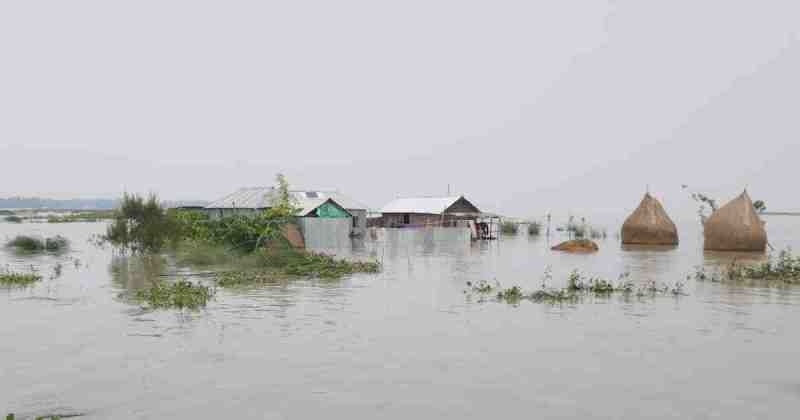- Indian MP Warns Bangladesh Faces Rising Lawlessness |
- Law and Order Must Be Ensured Ahead of Polls: Prof Yunus |
- Tough times ahead, everyone must remain united: Tarique Rahman |
- Sirajganj’s luxuriant mustard fields bloom as an oasis of gold |
- Man killed after boat hits sand-laden bulkhead on Padma River |
Floods worsen in Sherpur; army joins rescue as 3 die

The flood situation in Sherpur district has worsened, claiming the lives of three people and leaving 60,000 people stranded as upstream water from India’s Meghalaya continue to inundate lowland areas.
The floods hit three upazilas—Nalitabari, Jhinaigati, Nokla and Sreebardi—affecting 122 villages in 20 unions.
In Nalitabari upazila, three people, including a woman, died while seeking shelter, said Nalitabari Upazila Nirbahi Officer (UNO) Masud Rana.
Rescue operations were ongoing, with the army joining local volunteers and the fire service to evacuate those stranded. Over 1,000 families have so far been evacuated to safer areas, reports UNB.
In Jhinaigati’s Dighirpar village, volunteers from Rapid Response BD (RRBD) saved a 3-month-old baby who had been kept on ceiling of a house to escape rising waters.
The baby and the family were rescued by the team, which had come from Mymensingh.
The flood situation worsened with all unions in Nalitabari and Jhinaigati submerged. Crops, livestock, poultry, and homes were destroyed, leaving many farmers devastated. Roads remained submerged or damaged, causing suffering to local residents.
The local administration designated schools as temporary shelters.
Control rooms were set up, and separate teams were coordinating relief efforts.
According to UNO Masud Rana, all unions, including Nalitabari municipality, were severely affected and Garkanda Government Primary School and Taraganj Women’s Madrasa were opened as shelters. Life-saving equipment including speedboats and life jackets were arranged.
Water Development Board’s executive engineer Md. Nakibuzzaman Khan said the Bhogai and Chellakhali rivers in Nalitabari upazila are flowing above danger levels.
Several embankments along the Bhogai, Chellakhali, and Maharshi rivers have been breached, and emergency efforts to contain the damage are underway.

